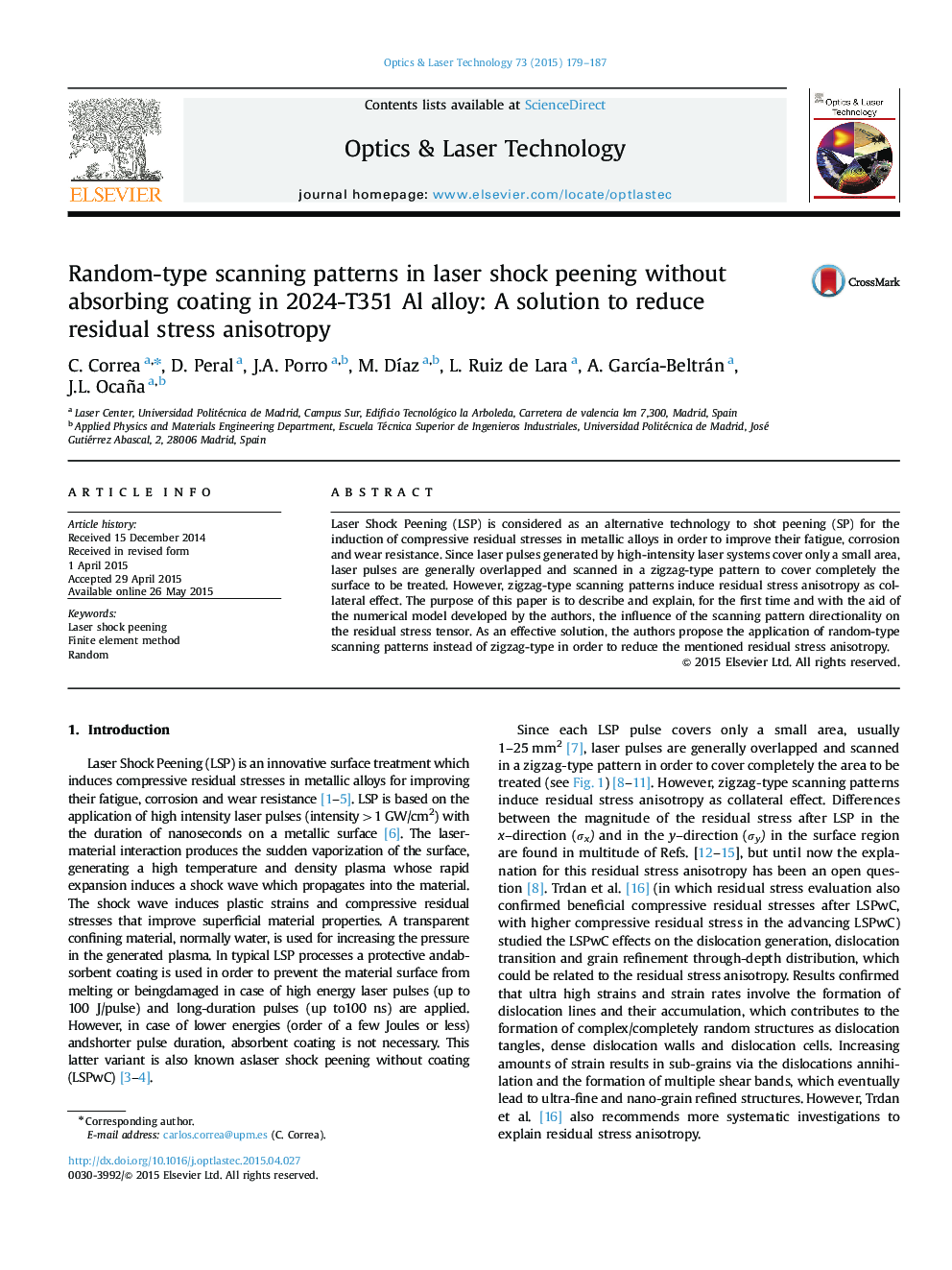| Article ID | Journal | Published Year | Pages | File Type |
|---|---|---|---|---|
| 733270 | Optics & Laser Technology | 2015 | 9 Pages |
•The influence of advancing direction on residual stress anisotropy is explained.•3D FEM model allows to simulate massive parallel LSP over real geometries.•Good match between simulated results and experimental measurements.
Laser Shock Peening (LSP) is considered as an alternative technology to shot peening (SP) for the induction of compressive residual stresses in metallic alloys in order to improve their fatigue, corrosion and wear resistance. Since laser pulses generated by high-intensity laser systems cover only a small area, laser pulses are generally overlapped and scanned in a zigzag-type pattern to cover completely the surface to be treated. However, zigzag-type scanning patterns induce residual stress anisotropy as collateral effect. The purpose of this paper is to describe and explain, for the first time and with the aid of the numerical model developed by the authors, the influence of the scanning pattern directionality on the residual stress tensor. As an effective solution, the authors propose the application of random-type scanning patterns instead of zigzag-type in order to reduce the mentioned residual stress anisotropy.
